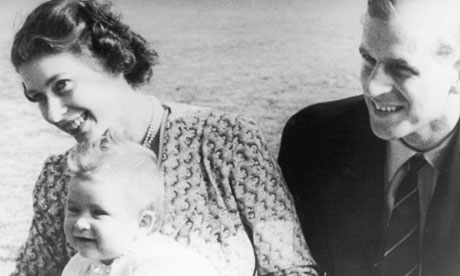
As the Duchess of Cambridge's due date approaches, the royal family looks set to establish a more modern approach to childcare. With Prince William taking the standard paternity leave of two weeks, speculation is rife that his wife and newborn child will retreat to her parents' Berkshire home to recover after the birth. Last week, TV presenter Beverley Turner called upon the duchess to become an advocate for breastfeeding, but it remains uncertain what decision she will make. Perhaps in common with many new mothers, she is simply waiting to see how it goes.
Royal breastfeeding mothers are a relatively new phenomenon. The present Queen, Elizabeth II, was breastfed following her birth in 1926 and chose to continue the practice with her own children. However, in the 1960s, her sister, Princess Margaret, reputedly found it distasteful and made the opposite decision. Princess Diana insisted on nursing William and Harry herself, but while the Cambridges are expected to follow her more "hands-on" approach to parenting, this does not guarantee her grandchild will be fed in the same way. Historically, most royal mothers did not always believe that breast was best. In fact, in some cases, it was considered at best an inconvenience, at worst, downright harmful.
In past centuries, the majority of royal babies were handed to a wet nurse soon after their arrival. Royal women were often little more than symbolic figures, delivering child after child to secure a dynasty. This was particularly important in times of high infant and child mortality, when the production of second, third and fourth sons were crucial. Breastfeeding offers a degree of contraceptive protection, so with their babies being fed by others, Queens were free to resume their duties and begin the process of conceiving the next heir. It was also believed that breast milk would be curdled if marital relations were resumed before weaning. Often, the royal household would contain a team of lactating women, to ensure the new arrival could be fed on demand.
Women of good birth were considered the most suitable wet nurses, as long as they were of good character and healthy appearance. We even know the names of some of them: Henry VIII's short-lived son in 1511 was suckled by an Elizabeth Poyntz and the future Richard the Lionheart was nursed by a woman named Hodierna. Boys traditionally spent longer at the breast than their sisters, often up to two years, as they were considered to be more dependent and fussy as babies.
When convenient, aristocratic women from the royal household were chosen for the job. In 1566, the future James I was suckled by Lady Reres, his mother's lady-in-waiting, while the youngest daughter of Charles I was fed by the trusted Lady Dalkeith in 1644. The choice was an important one. It was believed that babies could absorb a wet nurse's temperament through her milk, as well as being affected by her diet, so strong alcohol, garlic and spices were rejected in favour of bland food. Wet nurses would use herbal and folkloric remedies to ensure their continuing milk flow, such as wearing a steel chain between their breasts or reciting charms.
During the 18th century, doctors were suspicious of the value of breast milk and advised mothers to avoid using it where possible. The first milk, or colostrum, was judged to be harmful, and it was thought that feeding should not take place at all until post-partum bleeding was over. Newborns were fed with animal milk, or honey and sugar water for around a month. Some were suckled on linen pouches, horns, clay jugs and pickled cow nipples, which must have been riddled with germs. Gruel and oatmeal were also used as weaning foods, which often resulted in fatal cases of diarrhoea. Queen Mary of Modena was told by her doctors that her ailing baby, James Stuart, would not last half an hour if breastfed. In the end, a local tile-maker's wife was brought to feed the baby in such haste that she was wearing old shoes and no stockings. Her milk probably saved the baby's life.
Queen Victoria found the idea of breastfeeding repellent, considering it the "ruin" of intellectual and refined young ladies. Her own daughters concealed from her their choice to suckle their babies themselves, leading her to brand them "cows" on discovering the secret. Surprisingly, considering modern perceptions of her as a Victorian domestic goddess, Mrs Beeton echoed this sentiment. She compared babies to vampires and advocated the use of the newly available powdered milks, administered in a glass jar, to prevent maternal fatigue.
Now that royal mothers are no longer tied to an endless regime of producing heirs, the duchess's decision whether or not to breastfeed will be an entirely personal one. In the privacy of her parental home, she will have time to adapt and make her decisions without being overlooked by the traditional throng of courtiers, lords and ministers. Today's doctors may advise that breast is best but the numbers of new mothers choosing to feed their babies themselves is falling. The eyes of the world may be turned her way this July, but as a modern mum, the Duchess is more likely to consult her family and friends before following tradition and duty.
Follow Amy Licence on Twitter at twitter.com/PrufrocksPeach

